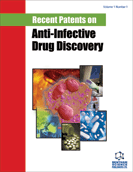Abstract
Liver hydatidosis is the most common clinical presentation of cystic echinococcosis. Although liver cystic hydatidosis is considered a benign disease and many patients do not develop symptoms for years, its complications can be severe and life threatening (usually as a consequence of rupture in the biliary tree, in the peritoneum, in the bronchi, and of anaphylactic shock), thus, treatment is recommended for all viable and active hydatid liver cysts. Among the therapeutical options available for this disease, such as open and laparoscopic surgery and chemotherapy, percutaneous treatments have gained considerable interest over the last two decades, due to their efficacy, safety and high patient acceptability.
Percutaneous treatments for liver cystic hydatidosis were once discouraged due to the risk of anaphylaxis following cyst puncture. Following the first uneventful attempts in the mid ’80’s, these treatments were increasingly used and techniques such as PAIR (Puncture, Aspiration, Injection, Re-aspiration) and its variants were developed and implemented in clinical practice. Although the evidence currently available is not sufficient to support or refuse the superiority of PAIR in terms of efficacy, numerous studies have demonstrated that it carries lower rates of morbidity, mortality, and disease recurrence and is associated with shorter hospital stays compared with surgery.
The present review provides a brief history of percutaneous treatments for liver cystic hydatidosis, summarizes the currently available evidence on the subject, gives a brief overview of potential future developments in this field focusing on radiofrequency ablation techniques and presents some new patents on the issue.
Keywords: D-PAI, Hepatic echinococcosis, liver hydatidosis, liver hydatid cysts, PAIR, percutaneous treatment, radiofrequency ablation, Echinococcus granulosus, scolicidal agent, PERCUTANEOUS TECHNIQUES
 24
24





















